Power from the air? Local company Flooid claims new source of clean, sustainable energy
| Published: 11-07-2021 4:59 PM |
EASTHAMPTON — As the world tries to combat global climate change and find workable clean alternatives to energy production, a small Easthampton company says it has a patented new way of creating electricity, one that could revolutionize how power is generated around the world.
On Monday, the Gazette was invited on an exclusive tour of the Flooid Power Systems pilot facility, currently located on a property in western Massachusetts that remains undisclosed to the public.
“We have kept this under wraps for the last six years,” said Mark Maynard, who co-founded Flooid Power and is its chairman and director of research. He believes the new technology will be a “game-changer” in energy production.
The company is waiting to be evaluated by the Massachusetts Department of Energy Resources to get Flooid power classified as a new form of sustainable energy.
Maynard said the Flooid power system can generate continuous, utility-scale power 365 days a year at any location around the world. According to Maynard, it uses no fuel, creates no emissions or waste, and can be easily scaled and replicated anywhere there is solid ground to produce reliable, affordable power.
“The key to our system is collecting energy in the air and converting it into electricity,” Maynard said.
Company President and co-founder Ben Schwartz called the system “elegant and intuitive.”
“We use air and gravity — these are not resources we are going to run out of,” Schwartz said. “Once you get your head around it, the system is obvious. It is a novel reconfiguration of existing technology.”
Article continues after...
Yesterday's Most Read Articles
 Holyoke man finds bear paw in his yard
Holyoke man finds bear paw in his yard
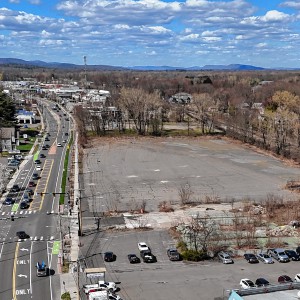 Petition to block auto dealership on King Street falters in Northampton
Petition to block auto dealership on King Street falters in Northampton
 First look at how little Amherst’s police alternative being used called troubling
First look at how little Amherst’s police alternative being used called troubling
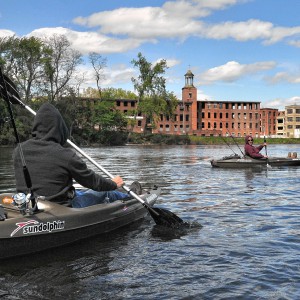 Developer lands $400K loan for affordable housing project in Easthampton mill district
Developer lands $400K loan for affordable housing project in Easthampton mill district
 Developer pitches new commercial building on Route 9 in Hadley
Developer pitches new commercial building on Route 9 in Hadley
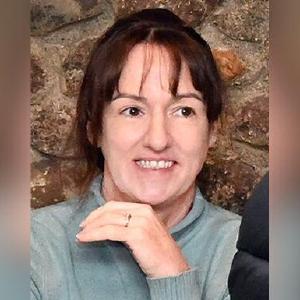 Boyfriend accused in slaying of Hampden sheriff’s assistant, former legislator’s top aide
Boyfriend accused in slaying of Hampden sheriff’s assistant, former legislator’s top aide
Flooid power is a compression-based energy system that uses advanced designs of heat pumps and compressors in combination with a new, highly dense, extra-low-drag nontoxic substance called “Flooid,” which was invented by Maynard.
“We have a heat pump that is 300% more efficient than the best heat pumps on the planet,” Maynard said. “We spend 50% less energy to compress air than a normal compressor, and we capture 100% of the heat in the process.”
Heavier than concrete with the thickness of a milkshake, Flooid is composed of roughly 50% water and minerals, such as barium sulfate, calcium chloride and clay. Maynard said that a small system uses 2,000 gallons of Flooid, which weighs in at 88 tons. The heavy weight provides a greater force to turn the system’s turbines.
“It is environmentally friendly, doesn’t go bad and doesn’t deteriorate,” Maynard said.
During the energy production process, the system uses efficiently compressed air to displace its signature Flooid, while at the same time capturing, concentrating and converting ambient heat into electricity.
“We have built a device that can take low-grade energy and convert it to electricity at a high rate of conversion,” Maynard said. “We are at a 70% conversion rate while nuclear power has a 40% conversion rate.”
The power generation is all done within a controlled, closed tower system, which has led to its description as “hydro power in a tower.”
“Actually, I can run this system from right here. It isn’t that much different than running a major hydro plant,” engineer Ken Britt said as he sat in front of a computer screen in the control room.
Outside the small control building stands a 125-foot-tall tower with two 12-inch diameter pipes running through the center. These are the conduits that carry the Flooid up and down through the system. The tower is flanked on both sides by powerful refrigeration and air compressors.
Maynard says that the pilot facility has proven that the system works and that it can be replicated and scaled up to produce 5-10 megawatts of power. Such a facility would include a 125-foot tower and 4 to 5 acres would be required for the operation, which would also include the facility’s parking lot.
Flooid Towers are primarily designed for microgrids or distributed power applications that generate electricity at or near where it will be used. The larger the tower, the more power it can produce.
According to Maynard, a 200-foot tower could produce four times the energy as a 125-foot design.
“A 400-foot tower could generate 350 megawatts of power, but we have not done that yet,” Maynard said.
He also noted that Flooid power could be included in the new design of large urban construction.
“It could go into a building 40 stories high and not take up more room than an elevator shaft,” he said. “That would generate enough to run that building and five to 10 others.”
At present, however, the company’s plan is to begin by building close to home.
“We are entering the larger power market through municipal utilities,” Schwartz said.
Flooid Power Systems is currently in preliminary negotiations to build a 200-foot tower that would provide power to a Massachusetts municipality.
Schwartz said that while the energy source is new, the way that it is supported and distributed will still be dependent on existing infrastructure and supply chains.
“Our way of entering the market is collaborative and transitional; we are not interested in toppling the apple cart,” Schwartz said. “The infrastructure for the fossil fuel-based economy will still be important.”
Flooid Power Systems was incorporated in 2017 and currently employs 13 people.
“We are a small company with a very big idea,” Maynard said. “We have worked on a shoestring, starting off with barely $5 million to get this to development.”
During the development stage, Maynard said the company had been separately approached by an oil company and a wind company, who offered large amounts of money to buy the technology “without plans to use it.” He suspects that they were trying to “bury the project” to protect their own industries.
“That is not going to happen, and we have made sure that nobody controls this technology but us,” he said. “This is technology that should not be suppressed.”
Both Maynard and Schwartz credit the success of the pilot project to their hand-picked team.
“We have a very unique group of highly talented and dedicated people who really believe in what we are doing, and they work together like a finely oiled machine,” Maynard said.
Maynard noted that the combination of a tight budget and working through a global pandemic and an interrupted supply chain did set development back, but also forced the team to troubleshoot and think creatively, often coming up with new and improved processes and ideas.
The company is a beneficial corporation and as such, 20% of its profits go back into the community.
Maynard said that Flooid Power Systems is committed to sourcing all their materials from whatever country in which they will be building.
“It’s how our company is designed,” he said. “If we are building in one place we should source from within, use local people and work to give back to the community.”
If all goes as planned, the company foresees producing easily replicated “cookie-cutter” systems that can create affordable, uninterrupted power, scaled to each community despite size, climate or location. This, they hope, will make sustainable development possible in all corners of the world.
“We are very close to the tipping point in climate change, we have to get this out to the public and we have to do it right now,” Maynard said. “This is not the only answer, but it is a big part of the answer.”

 Boards balk at limiting use of Hadley Town Common
Boards balk at limiting use of Hadley Town Common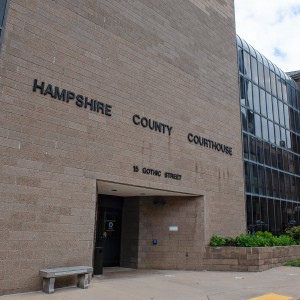 Holyoke man gets 5 years for assault, drug charges
Holyoke man gets 5 years for assault, drug charges Shelter money fading, but ‘not at the end of the line’
Shelter money fading, but ‘not at the end of the line’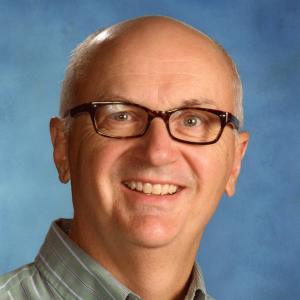 A Look Back: April 19
A Look Back: April 19
